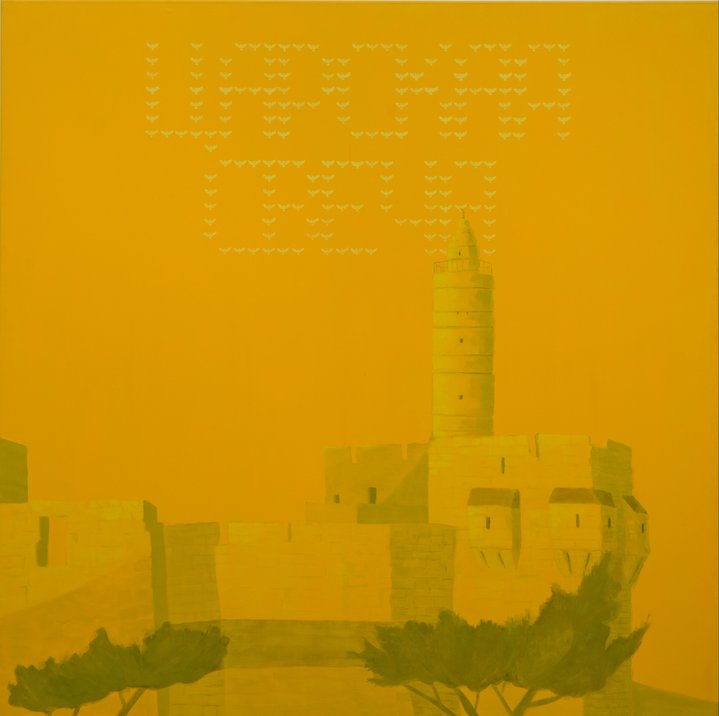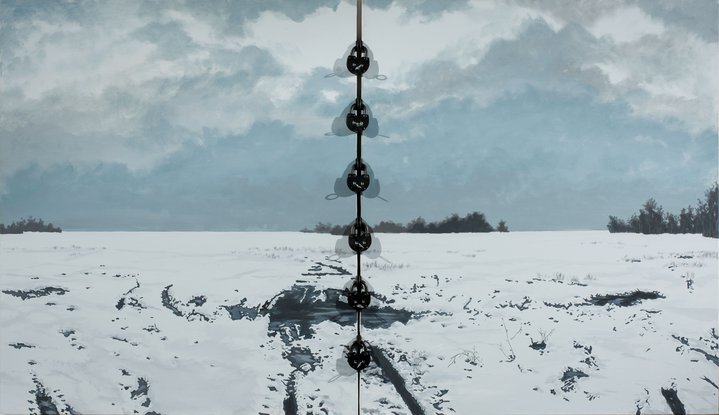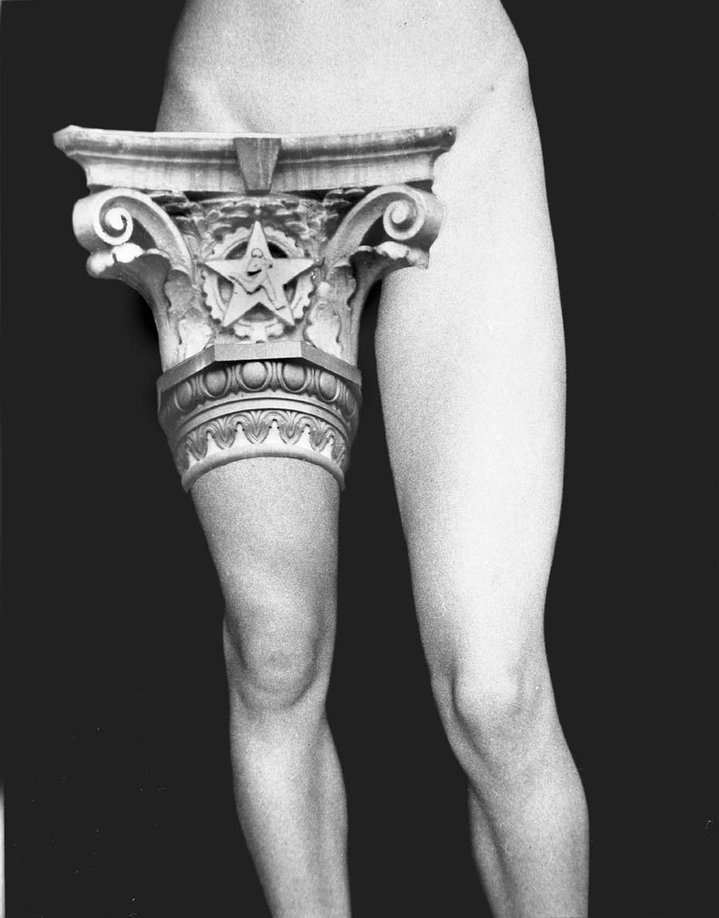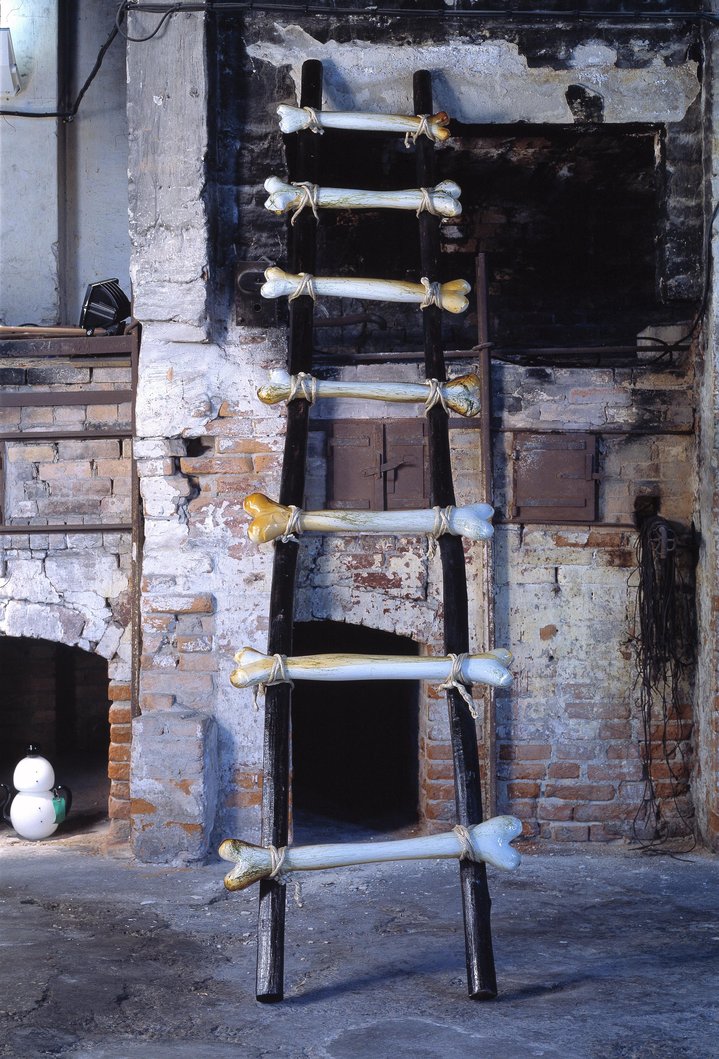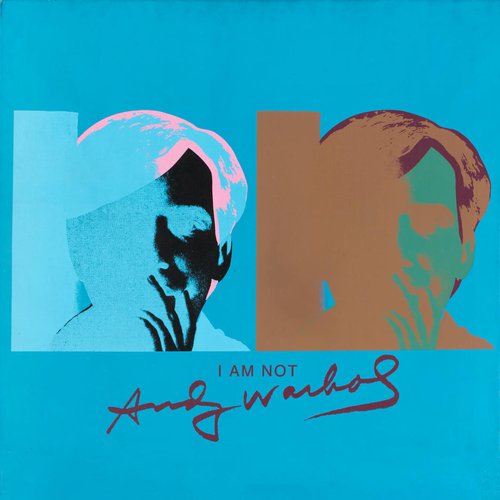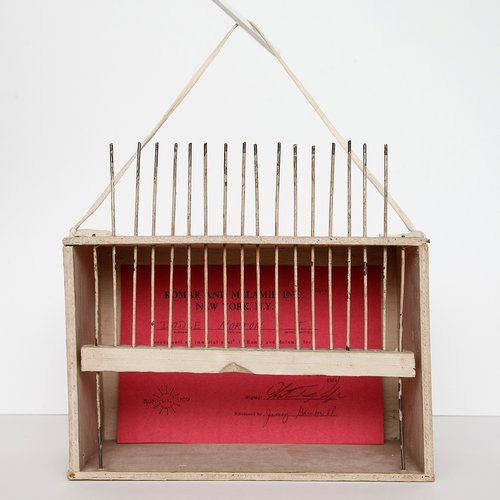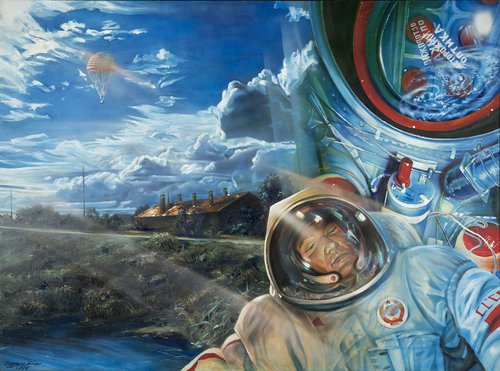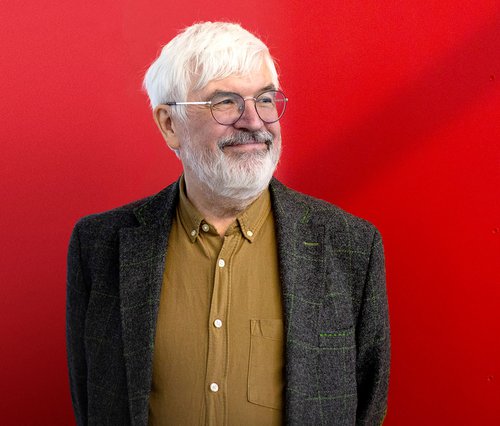When the Myth of Empire Meets the Avant-Garde

Boris Orlov. Tractor driver, 2001. Boris Orlov and Sergei Shekhovtsov. Parsunas Non Grata. Moscow, 2023. Courtesy of Stella Art Foundation
Independent exhibitions showing the work of Boris Orlov and the late Andrei Filippov are now concurrently on view in Moscow. Their art reflects on the ground-breaking pathos of the Avant-Garde and the poetical delusions of the Empire, and according to art critic Sergey Khachaturov, is just as relevant today.
Why is it that today an authoritarian state that dreams of returning to an old empire and has a deep mistrust of liberalism can passionately embrace abstraction and suprematism, the avant-garde at its most radical? In 2014, the avant-garde incorporated an imperial theme in the pompous opening ceremony of the Olympic Games in Sochi. Now, concurrently on view in Moscow, two exhibitions of work by the late Andrei Filippov (1959–2022) and Boris Orlov (b. 1941), might help us to understand how it is that the myth of empire is able to coexist with the avant-garde in our current times.
Using the example of soviet socialist realism, it was philosopher and art critic Boris Groys who first made meaningful connections between modernism and rhetoric of empire. For him, it was their shared emphasis on the diminution of the personality and the individual, which permeated the workshops of the avant-garde and their laboratory of the design of a new life and later also lay at the heart of the Communist Party’s total, immersive social and aesthetic programming in which life had to be shown in one ever-evolving stage of revolution. The avant-garde and socialist realism proposed an entire, holistic re-organization of life according to the laws of art. Both the Avant-gardists and the Communist Party aggressively reduced the participation of free, personal opinion of everyone, young and old, for the sake of an impersonal supra-personal project in which either the class (the proletariat in the avant-garde) or the state (under the leadership of the Communist Party) performed ritualized functions of force, supervision, punishment and order. It is clear that notions around Empire were not a subject for deep reflection in either socialist realism or in the avant-garde. Although in reality they shared the essence of the old Empire, in both traditions of the USSR, the ‘state of workers and peasants’ were defiantly dissociated from any imperial rhetoric and showed their allegedly humanistic nature.
Later on, throughout the 1970s and 1980s during the years of stagnation, the Soviet empire began to crack at the seams, and socialist realism, which had once seemed as indestructible as the Great Wall of China, began to crumble and collapse. It became a ruin. In Soviet unofficial art there was an unprecedented new space and opportunity to dissect the Soviet state in the context of the myth of Empire for the purposes of deconstruction, and to bring about a therapeutic social effect. Russian art historian Evgeny Barabanov, who has spent many years researching the work of Boris Orlov, separates Sots Art and Post-Pop Art in the anatomy of the Soviet imperial myth. Sots Art is represented by the duo Vitaly Komar (b. 1943) and Alexander Melamid (b. 1945). In 1972 they came up with the name ‘Sots Art’ and wrote its manifesto. Their art production was a conceptual reinterpretation of the banal realist style of the Soviet era with the introduction of a theme contrary to this style. In their celebrated 1982 painting ‘The Origins of Socialist Realism’ from the series ‘Nostalgic Socialist Realism’, the style and manner of Soviet monumental art is combined with a subject taken from French art of the Napoleonic era, in Europe broadly called the Empire style. Two classic early 19th century examples of this, both called ‘The Invention of Painting’, are by Louis Ducis (1775–1847) and Eduard Daege (1805–1883). With Komar and Melamid we see a young woman with antique drapery circling a shadow on the wall cast by General Josef Stalin holding a torchlight. Here Pliny the Elder's famous ancient story about the invention of painting with a girl who circled the shadow on the wall of her lover going on a journey became an ironic deconstruction of the Soviet imperial myth. It gave further traction to an idea of Groys and other theorists that it was Stalin as party god who was both the main artist and the theme of Soviet socialist realism from the 1930s till the early 1950s.
Post-Pop Art is personified in the work of Boris Orlov. For Barabanov, this term is not simply a play on words. It recognises how Orlov anatomises the empire not in a social or ironic way, but in a highly artistic way. In his work Boris Orlov shows us the inner contradiction of the sign representing the thing, and the thing turned into a sign. It is as if he is playing a give and take game with Pop Art’s use of reproduction and kitsch, surprisingly translating this game into the high register of the Grand Style, which unlike Pop Art is never a parody. In the legendary journal of unofficial art ‘A-Ya’, published by artist Igor Shelkovsky (b. 1937) in Paris in 1979, Orlov says about himself: "As for how I find a resolution in my work, I am always a constructivist. Colour in my work is part of its whole construction and helps to untangle the hidden meanings".
For Orlov, dissecting emblems, totems, and parsunas (Ed. a term much favoured by Orlov, originally used in art history to define a type of portrait art combining stylistic qualities and techniques of traditional Russian icon painting and the Western European secular portrait) from different empires is an analytical process devoid of any sarcasm, and it aligns with the creation of an avant-garde art object. For Orlov looks for basic similarities in the visual language, it is not just about constructing representations of power. Firstly, empire, like the avant-garde, worships the impersonal. It is a supra-personal totemic culture, translating the individual into merely a function of service and a sign of the crowd. Secondly, both avant-garde and empire aestheticise what belongs to the naive, archaic layers of culture. The pre-reflexive stage of the seduction of power with its sacred signs, pomp and triumph influence and shape human feelings, those of the ordinary citizens of the empire. Archaic grassroots culture with idols and talismen, a source of fresh images from pure consciousness unspoilt by academies, became a source of inspiration for the avant-gardists. Finally, thirdly, both adherents of avant-garde and empire style fetishise everything connected with heraldry: accessories, emblems, regalia, everything that comes from beyond the threshold of the world of the individual. Malevich's (1879-1935) ‘Black Square’ has now become a heraldic icon of modernism. The Pop-Art fetish of the sign has long since replaced what was Malevich's own metaphysical notions of the content of this famous work.
While Boris Orlov represents Post Pop Art, the late Andrei Filippov, in his engagement with the imperial myth, was a romantic conceptualist. He was fascinated by the language and textual cultures of slogans, aphorisms, and sayings. He deciphered the ancient languages of the Bible and delved into the history of Byzantium. In contrast to Boris Orlov, he was searching for a more personal, intimate perspective on those universal cataclysms and the roaring achievements Empires postulate in their policies. Filippov became a philosophical commentator and a master of visual parables, riddles, and puns. His saga with two-headed stencilled eagles, which he launched in flocks into the sky, and flipped on a mirrored surface might bring us some comfort. Although as individuals we are defenceless before the giant mahina of the empire, its rattling symbols and attributes gradually dissolve into history and become only pale ghostly silhouettes on the panes of eternity.
Celestial Geography or the Flight Analysis by Andrei Filippov
Moscow, Russia
20 September – 19 November, 2023
Boris Orlov and Sergei Shekhovtsov. Parsunas Non Grata
Moscow, Russia
5 October, 2023 – 18 February, 2024








